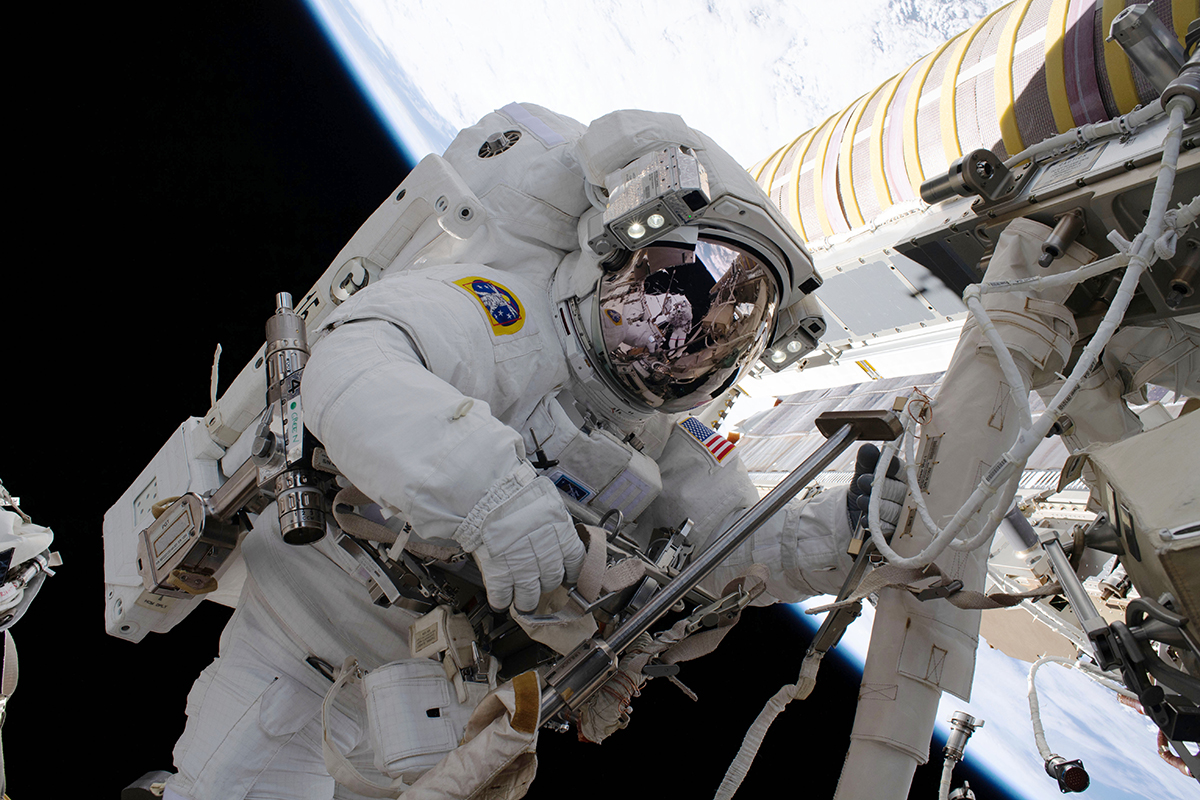
Fixing ‘Thermal Incompatibilties’ in the Bedroom
Subheadline
Temperature-regulating bedding based on NASA-funded research keeps people comfy at bedtime
A good night’s sleep can often be an elusive achievement, but NASA technologies have helped people rest better for decades, from memory foam mattresses to LED lights that help regulate circadian rhythms. Now a material originally tested for spacesuits is keeping the night sweats away.
In the 1980s, NASA’s Johnson Space Center in Houston was exploring ways to improve temperature controls in spacesuits. With temperature swings between extremes of minus 250 to 250°F, astronauts need to have effective air conditioning when working outside their spacecraft. Through a Small Business Innovation Research contract (SBIR), the agency funded Triangle Research and Development Corporation to experiment with using the basic properties of matter to solve this complicated issue.
Phase-change materials take advantage of the fact that substances maintain a steady temperature while turning from liquid to solid or vice-versa. By incorporating these materials into tiny capsules in the textile, called “thermocules,” the company theorized it could make liners that would stay comfortable while external temperatures fluctuated. Working off prior research It had done into phase-change materials for the U.S. Air Force, Triangle worked with NASA to create a prototype version of the material for spacesuit gloves. While it was never incorporated into anything NASA launched into space, Triangle licensed the material to Gateway Technologies, which was later renamed after this breakout product: Outlast. In the years since, Outlast has been shared with several companies around the world and used in everything from desk chairs to undergarments.
In 2012, Outlast Technologies was acquired by CoorsTek and the new management wanted to diversify. Instead of licensing the technology to others, the company would produce some products internally, selling them through various direct-to-consumer brands. Global Web Horizons LLC, also known as Slumber Cloud, headquartered in Arvada, Colorado, was founded as a subsidiary of this larger company. Slumber Cloud offers several pieces of bedding that use the phase-change technology, from pillows and bedsheets to entire mattress pads.
“Out of all our product categories, every product uses Outlast today,” said Wily Van Dehy, CEO of Slumber Cloud. “Even our loungewear products have an Outlast treatment to them.”
Outlast was spun out of CoorsTek in 2018, once again becoming an independent company headquartered in Germany. Slumber Cloud broke out in the process as well, becoming its own organization in 2019. Slumber Cloud is still based in Arvada, near the headquarters of its former parent company, and Van Dehy said all the firms still maintain a close relationship.
Since it was spun off, Slumber Cloud’s mattress pads and bedsheets have both been given awards by Good Housekeeping magazine, and more than 275,000 people have purchased their products. Van Dehy says the bedding is very popular with young professionals, people going through menopause, and “thermally incompatible” couples. In addition, much of the interest in the product is because of its connection to NASA.
“We like to say, ‘If it works in space, it’ll work in your bedroom.’”

Slumber Cloud products include bedding and loungewear made with a material known as Outlast, developed in part via a NASA contract intended to improve temperature regulation in spacesuit gloves. Credit: Global Web Horizons LLC

Spacesuits require robust environmental controls to keep astronauts comfortable in the extreme temperatures of space. While phase-change materials didn’t make it into any suit that’s been to space, NASA funding resulted in a textile now used widely in consumer products. Credit: NASA













